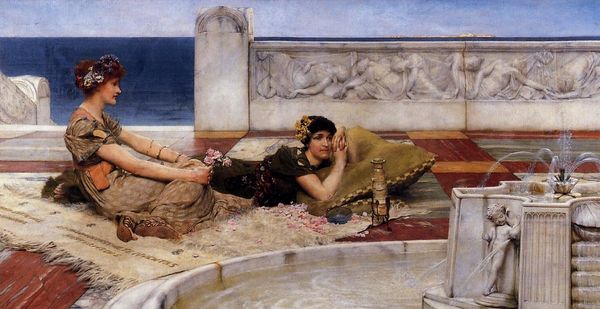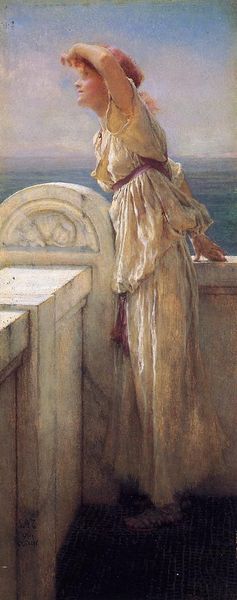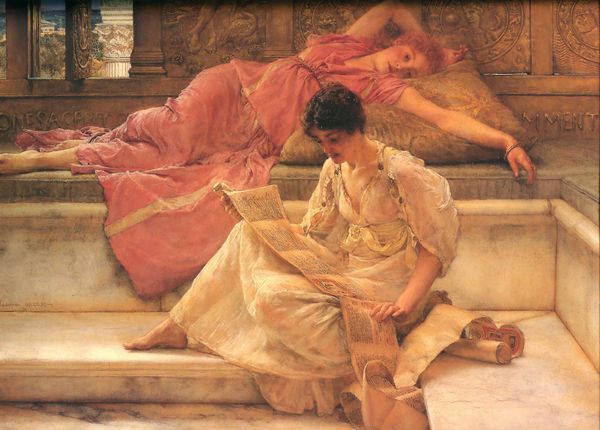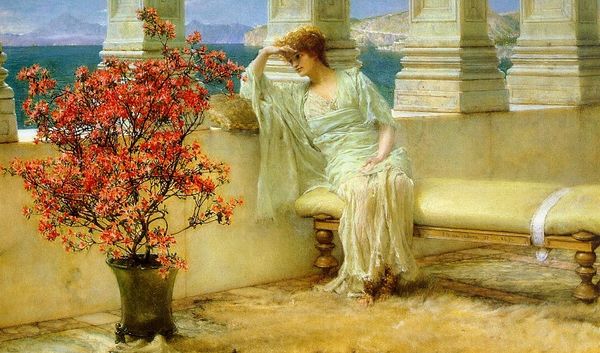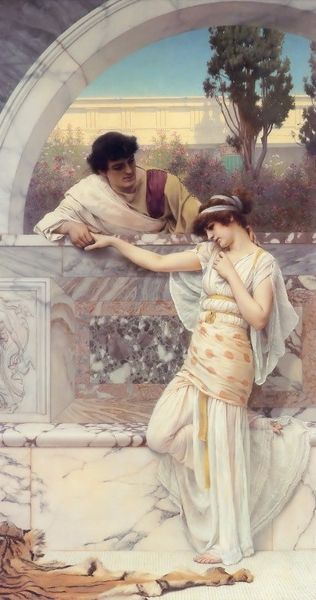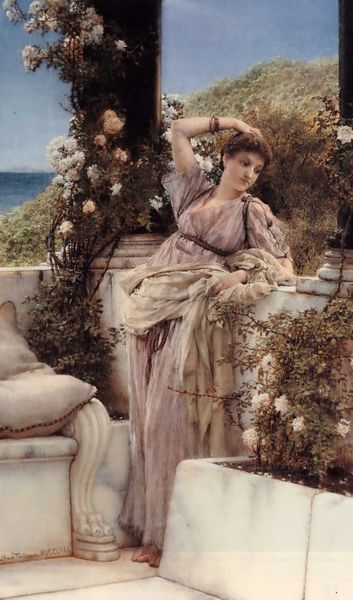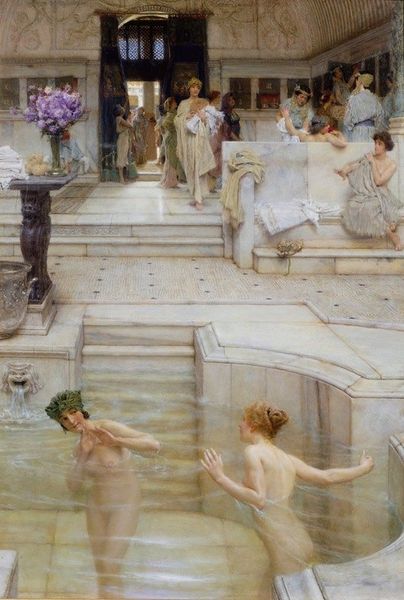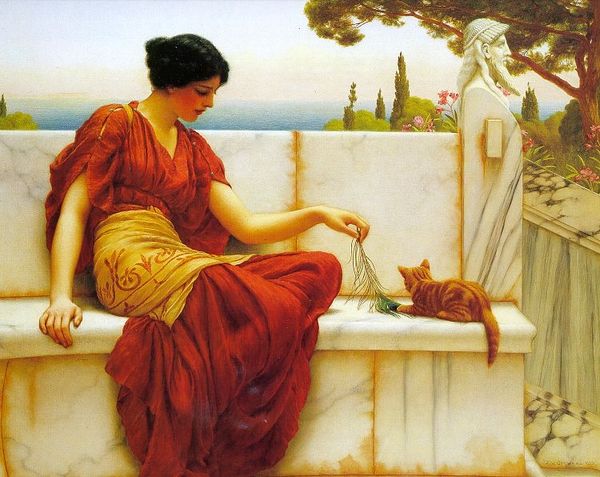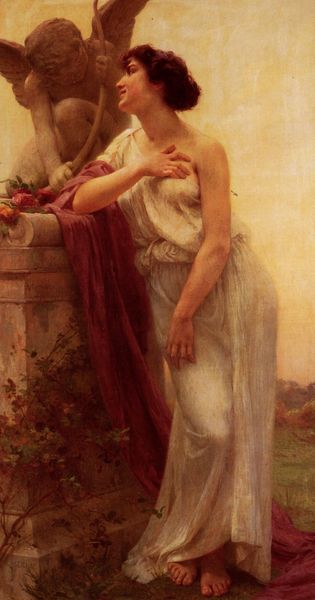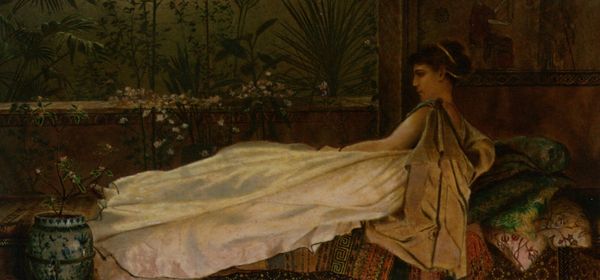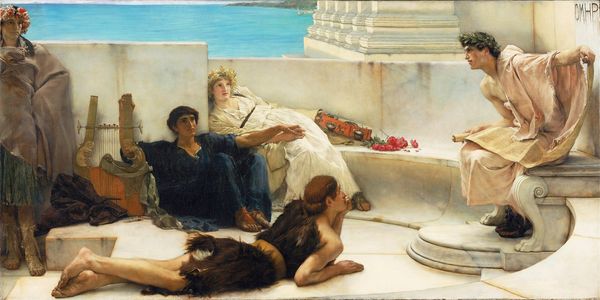
Copyright: Public domain
Editor: This is Lawrence Alma-Tadema's "The Poet Gallus Dreaming," painted in 1892. It's oil on canvas, and the setting just feels so meticulously crafted and theatrical. What strikes me is the way the artist emphasizes luxurious materials, even in this depiction of supposed antiquity. What do you see in this piece? Curator: It’s fascinating how Alma-Tadema uses oil paint to create this impression of marble, fabric, and foliage. This isn't just representation; it’s a showcase of the artist's and patron's command over resources. Look at the mosaic floor – each tile rendered meticulously, signaling wealth and status through the sheer labour involved. Notice too the treatment of Gallus's toga. How is it being depicted? Editor: It's rendered in such fine detail. It makes me think that the point of the image isn’t necessarily just Gallus himself but also the fabric...and everything that went into producing it, from the cultivation of the fibers to its weaving and dying. It seems the point is more the presentation of the cloth, really, the draping and display of something expensive. Curator: Precisely. Alma-Tadema is showing the complex supply chains that underpinned even this ‘simple’ scene. Consider the labor needed for that mosaic floor or to quarry and carve the marble. And what does it tell us about Alma-Tadema's intended audience? Editor: Well, it certainly makes me consider the opulence afforded by the elite of his own time, not just of ancient Rome. This definitely gives me a whole new lens through which to consider his work. Curator: Indeed. By highlighting materiality, we start to unravel layers of social context intertwined within. A valuable lesson for any budding art historian.
Comments
No comments
Be the first to comment and join the conversation on the ultimate creative platform.
